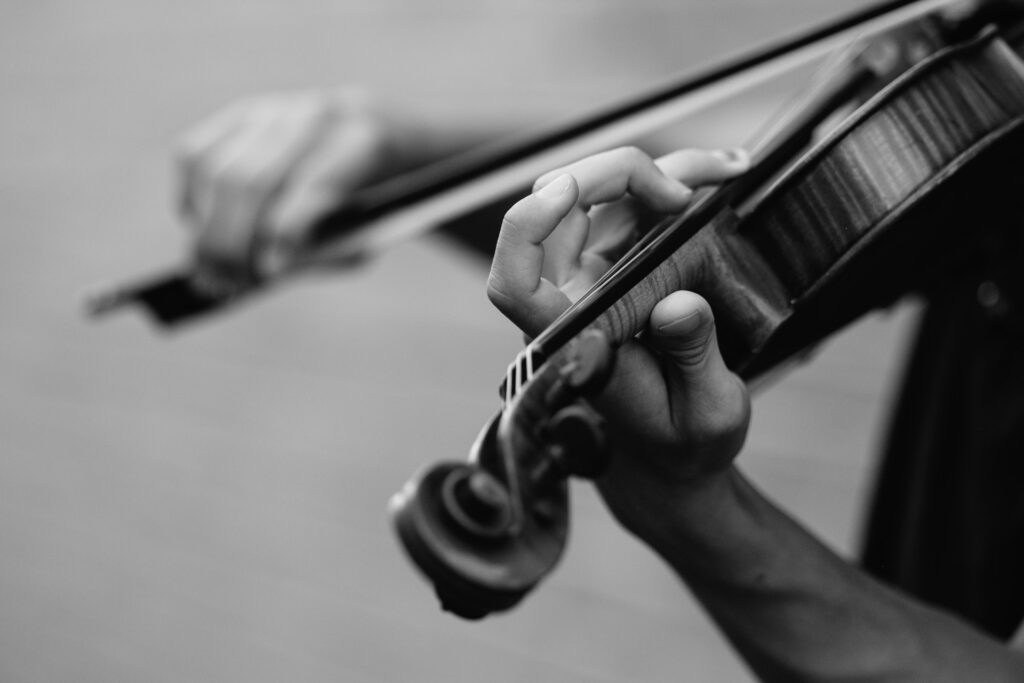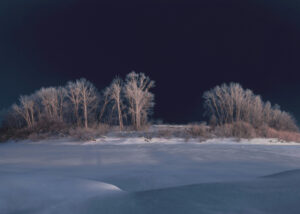As I write, the horrific attacks on the people of Ukraine continue, but recently I witnessed a sign of beauty amidst the chaos. Standing in a grey bomb shelter, with pipes overhead, a Ukrainian musician brings forth a haunting tune from his violin. The video screen pulls back to reveal other quadrants in which other violinists play the same tune. As the camera continues pulling back, more players join the group, adding harmony and complexity to the original tune. Flags on the screen show solidarity with the one violinist seeking protection in that dingy basement.
Solidarity through sound. Beauty in the midst of conflict.
In these grey days before the greening of spring, we welcome reminders that beauty is present—if we have eyes to see and ears to hear. Caught up in world events and conflicts close to home, we find it easy to focus attention on the dreariness in the world. Our senses fail to take in the signs of beauty right beside us.
I’ve been pondering the hymn, “For the Beauty of the Earth,” no. 120 in the Voices Together hymnal. Tradition has it that Englishman Folliot Sandford Pierpoint wrote the text on a spring day, inspired by the view from a hilltop near his home. In verses 1 and 2 he points to the “glory of the skies” and “hill and vale and tree and flow’r.” He writes of divine love “which from our birth over and around us lies,” and then in verse 4 he spells out the joy of human love—of family and friends with us now and of “friends above.”
Verse 3 is especially relevant, because this issue of Canadian Mennonite includes a Focus on the Arts, starting on page 27. “For the joy of ear and eye, / for the heart and mind’s delight, / for the mystic harmony / linking sense to sound and sight.”
“We worship a creative and creating God,” write Sarah Kathleen Johnson and SaeJin Lee, who served as co-chairs of the hymnal’s visual arts committee. “We are called to worship God with our spirits, minds, hearts, and bodies, including all of our senses.”
This can be a challenge for Mennonites, as we often find it easier to show devotion through our acts of service. Perhaps less recognized are the ways in which humans engage in visual, tactile and aural arts, by shaping words, images and movement together, fitting sound and sight to create beauty in the world.
Or other times we may be tempted to focus on the power of the mind, espousing a faith that ignores the physical senses and downplays the body God gave to each of us. The Creator who made all things good invites us to create and enjoy works of art as embodied worshippers, raising “our hymn of grateful praise” to the “Lord of all.”
The feature in this issue, “Worship through visual art,” introduces some of the artworks that appear in the newest Mennonite hymnal. We are invited to learn about the visions that inspired the artists and to explore how their creations might deepen our connection to God the Creator. Thank you to the artists and the rest of the hymnal team for offering this new visual aspect to Mennonite corporate worship.
Art for a hymnal, choral music, drama—these just begin to touch on the subject of beauty expressed through the arts. CM’s semiannual Focus on Books & Resources points to the way written words enrich our lives. Perhaps future issues will include stories on Mennonite dancers. And what about beauty experienced through taste and smell?
The arts invite us to stop and pay attention, to enjoy. In an essay titled “Taste and See: Looking at the Pictures in Voices Together,” Magdalene Redekop writes, “It is a lesson I have had to learn repeatedly when taking in any art: slow down.”
Do we have the eyes to see and the ears to hear the beauty expressed through the arts? Sometimes we might simply revel in the pleasure of the moment. At other times that beauty reveals new meanings and connects us to human and divine realities beyond our immediate experience. Beautiful works of art can inspire both hope and loving action. Ultimately, beauty invites us to praise the Creator of all—if we have ears to hear and eyes to see.
Read more editorials:
Two years in
Learning to listen
Citizens of a city on a hill
Thanks to you
Telling your stories









Leave a Reply
You must be logged in to post a comment.